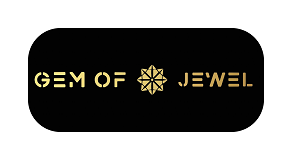Moissanite Vs Diamond
To help you to catch your perfect piece, choosing between the conventional diamonds and the contemporary moissanite we help you to comprehensively understand what is moissanite vs diamond and the facts each of them holds and how long you can carry your gem, making your purchase favorable to your choices and your pockets.
What is Moissanite?
The gemstone born from stars, which changed the perception of diamond preferring crowd in the year 1893 when a French scientist named Henri Moissan discovered microscopic gem-like particles at a site of a meteorite strike in Arizona. Later Mr. Moissan was awarded a Nobel Prize in Chemistry for his contribution, proposing that moissanite crystals are minerals of silicon carbide.
Naturally occurring moissanite are incredibly rare but to reach its needs because of its beauty and elegance, scientists later developed a thermal growing process that creates crystals of silicon carbide, received as moissanite gemstone.
Moissanite vs Diamond
Diamonds own the charts of beauty but alongside they torment the natural resources as well as your pockets. Developed after hundred years of compression of carbon derivatives whereas moissanite are still named to come from stars, these and many more differences makes this question important to be answered, Moissanite vs Diamond?
Choosing a crystal derived with the hustle of clearing land and landforms only to achieve a crystal for your finger is something against natural perceptions, whereas moissanite is achieved with the way approachable beauty without fuss, totally mining free.
Here's the chart describing major difference between Moissanite and Diamonds:
| Moissanite | Diamond | |
| Hardness | On the Mohs scale, moissanite scores a 9.25, a very good score that makes it one of the hardest. substances on earth, and very suitable for everyday wear as an engagement ring. | Diamonds are the hardest known mineral and receive a 10 on the Mohs Scale of Hardness. Diamonds are very durable and ideal for everyday wear. This contributes to their popularity as engagement rings’ center gemstones. |
| Color performance | Moissanite exhibits “thermochromics,” meaning that it is sensitive to color change at temperatures above 150° F (65 C). These are usually temporary, but these heat-sensitive color changes can sometimes be permanent. While moissanite are labeled as “colorless”, the gems can still project a yellow or grayish hue in certain lights. Here again, the larger the moissanite, the more noticeable the color. | A diamond’s color is everlasting. A colorless diamond, whether natural or lab created, has a natural body color that contains no traces of yellow, brown or grey, resulting in a dazzling, bright white appearance. |
| Sparkle | Moissanite actually has a higher refractive index than diamonds, at 2.65, and their faceting pattern is different, leading their brilliance to display a “rainbow effect. "The rainbow effect tends to make moissanite look fake to the well-trained eye, and is especially noticeable under natural light and in larger stones. | Diamonds reflect light in three different ways. The white light reflected back is referred to as brilliance, while the rainbow of colors refracted through the diamond is referred to as dispersion. The surface sparkle of a diamond, known as scintillation, is a third type of diamond light return. A different type of brilliance is what makes it possible to distinguish a moissanite from a diamond. The combination of these three gives diamonds their famous sparkle. |
| Price | Moissanite gems typically vary in price only based on size and whether the stone is Premium or Super Premium. Moissanite are a cheaper option, though buyers must take into account the lifetime costs of maintenance like jeweler cleanings. | Natural diamonds and lab created diamond prices differ based on shape, carat, cut, color, and clarity. Diamonds are usually the more expensive choice. |
| Sourcing | Because moissanite are lab created, they are an appealing option for those seeking an eco-conscious gemstone as they require no mining. | The current industry standards to offer both Beyond Conflict Free Diamonds that have been selected for their ethical and environmentally responsible origins. Diamonds have of course, bad history with "blood diamonds". They also require lots of mining and the destruction of the earth's natural beauty. |
Why choose moissanite?
The question Moissanite vs Diamonds feels like a combat of equal competitors but the balance is quite weighted for moissanite, comprehend yourself
Mining Free
The gemstone is created in hustle free controlled environments with advanced technologies, thus have traceable origins, thus known better one in moissanite vs diamond.
Value Worthy
The important criteria comparing moissanite vs diamonds is their value for money and affordability. Moissanite offers pocket-friendly beauty as re less expensive per carat then rest of the gemstones.
Durable
Comparable criteria with moissanite vs diamond where on the Mohs Scale of Hardness, Moissanite stand at 9.25 demonstrating its worthy durability and suitability for everyday wear.
Sustainable
The lab-developed gemstones are completely resourced independent making our rare and natural resources exportable for generations to come.
Healthy Carbon Footprints
Apart from the comparison of Moissanite vs Diamonds, lab-developed moissanite show lesser carbon footprints and result in even lesser environmental impacts.
